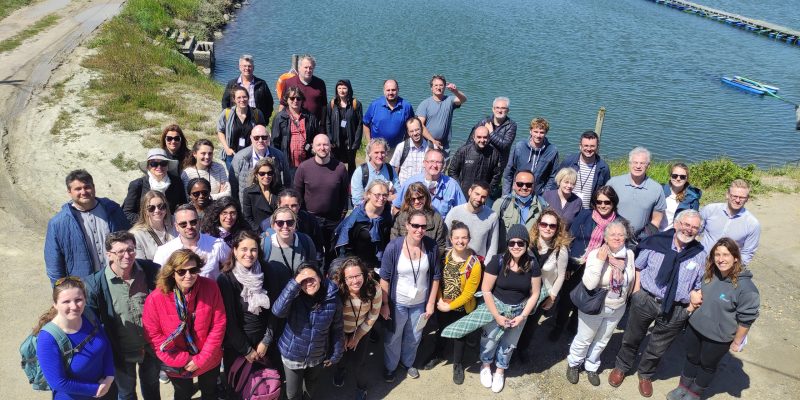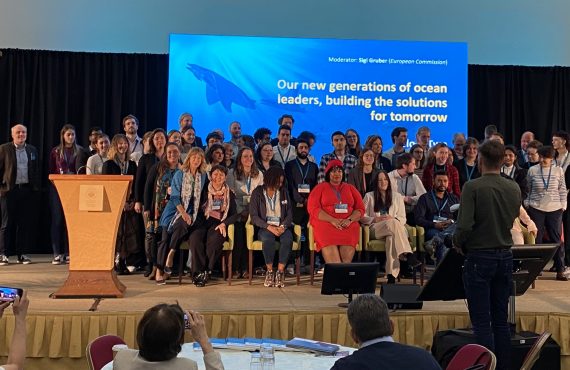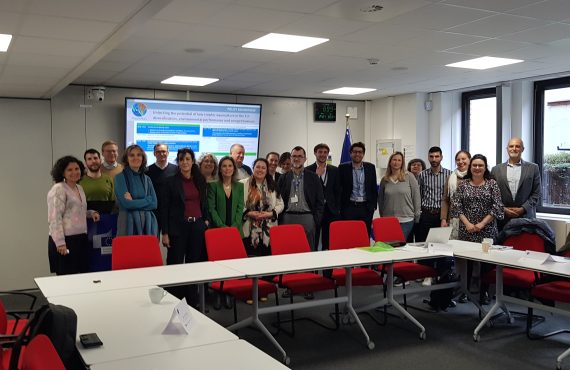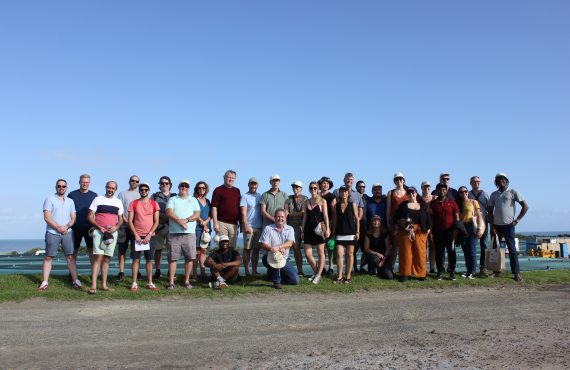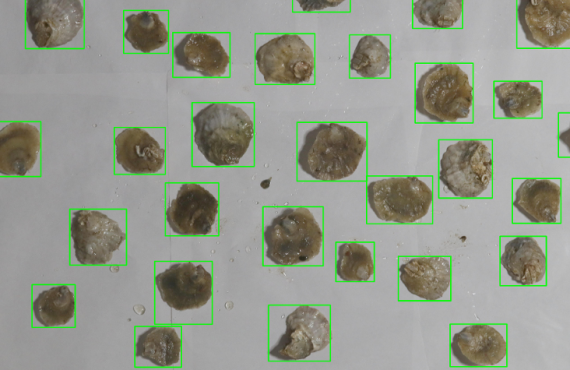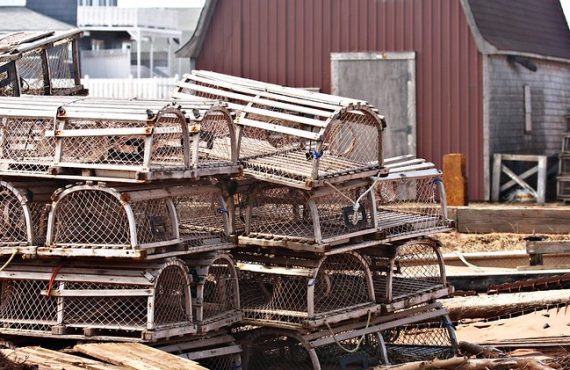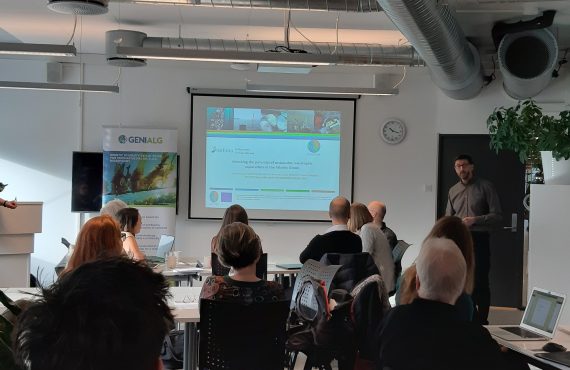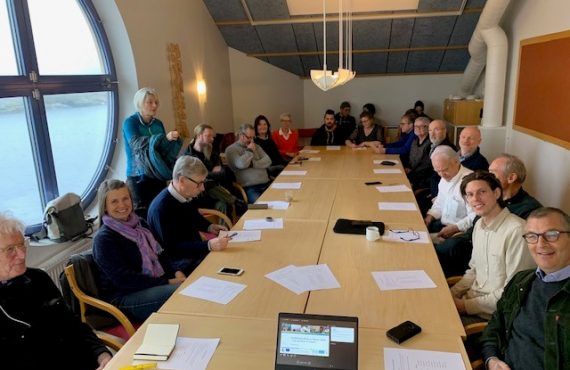AquaVitae Consortium travelled from Europe, South Africa and Brazil to meet in Portugal. Photo: © Rafael Méndez Peña.
70 participants gathered in the third AquaVitae annual meeting that took place from April 26th to 28th in Porto, in the north of Portugal. It was the first time after the pandemics that the whole consortium could travel e to present advances in key flagship research results. This project is funded by the Horizon 2020 and it is represented by 35 partners from the Atlantic basin: Europe, America (North and South), Namibia and South Africa belong to the consortium.
This 3-day-meeting served to present the state of art of the different research lines studied in the project, all of them aiming at finding new solutions for low-trophic species production, including macroalgae, shellfish, echinoderms, shrimp and low trophic finfish. Researchers and industry partners discussed the outputs from their Atlantic wide collaboration.
Philip James, AquaVitae´s coordinator, hosted the meeting and welcomed the consortium highlighting how nice was to see each other physically: “Covid happened and we manage to replace in-person meetings with online meeting since 2019. It´s good to see your faces again in the same room”.

Work presented during the third annual meeting covered different aquaculture value chains in the Atlantic, from the cultivation of native oysters, mussels and new macroalgae species, to grow-out in Integrated Multi-trophic Aquaculture (IMTA) systems. Researchers are tracking the data of new hatchery protocols as well as different procedures in the culture of low-trophic species in order to develop sustainable solutions to preserve the planet by, for example, storing CO2 in bivalves shells or restoring the barrens in the ocean removing the sea urchins but letting them grow outside the seas.
AquaVitae project also tends to foster low-trophic species as food to feed a growing population that cannot depend only on the limited space on earth to grow animals. Land-based and offshore aquaculture is a way to produce food rich in protein. However, there is a need to promote some species, such as algae, abalone or sea cucumber, that are not traditionally eaten. That is why a cooking event is being developed to show how to use them in the kitchen.
A Massive Open Online Course (MOOC) is also one of the contributions of the project. Theory and practical information has been put together to teach about low-trophic aquaculture. This MOOC will be soon launched for those interested not only in aquaculture, but also in the blue economy and sustainability.
AquaVitae also welcomed its student section in the third annual meeting. Since its beginning the project has hosted different apprentice exchanges. Some of the participants of this training actions were invited to Porto where they told their experiences working in the sector.
Finally, the consortium travelled to Alga+ in Aveiro, an AquaVitae industry partner devoted to algae aquaculture. Helena Abreu, Alga+ manager, invited its Aquavitae colleagues to the facilities and explained to them all the procedures involved in the work they deal with since Alga+ was opened back in 2011.
